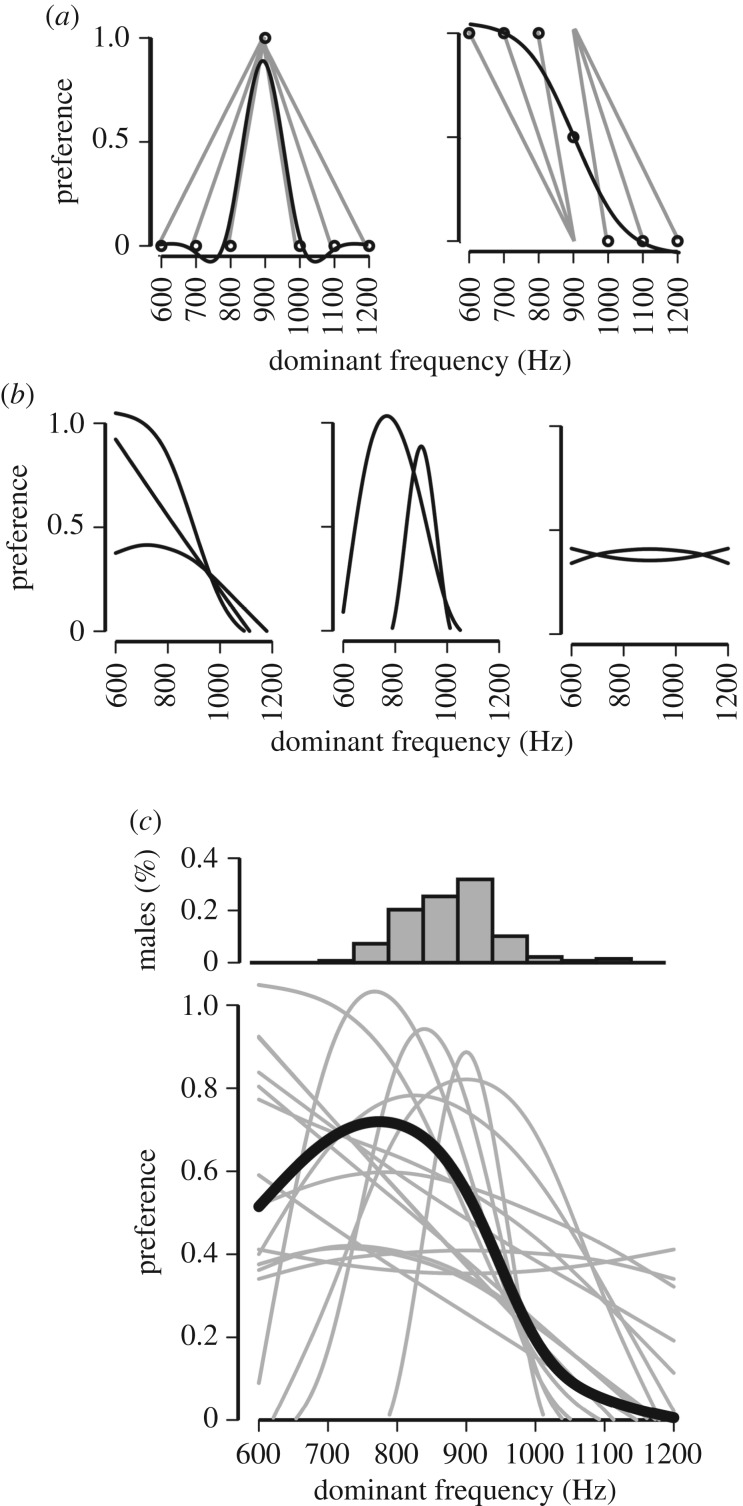Figure 2.
Variation in preference functions for the low-frequency peak of H. cinerea male advertisement call. (a) Preference functions were obtained by conducting two-choice trials (grey lines indicate stimulus exemplars tested in each trial), which were converted into preference scores (symbols), onto which non-parametric splines were fitted (black line). Shown are an example of a closed (left) and an open (right) preference function. (b) Functions could be grouped into three general shapes: open (53% of females; left), closed (42% of females; centre) or flat (5% of females; right). (c) Comparison between the distribution of the dominant frequency peak of male advertisement calls in the population (n = 138; bin size is 50 Hz) with the preference functions of individual females (grey lines), and for comparison, the composite function for the population (black line).

